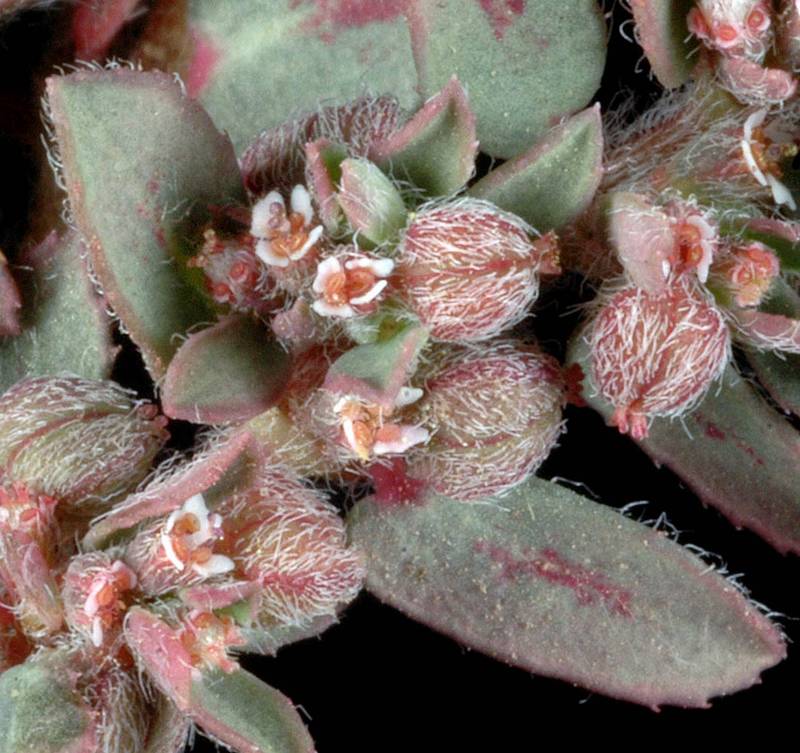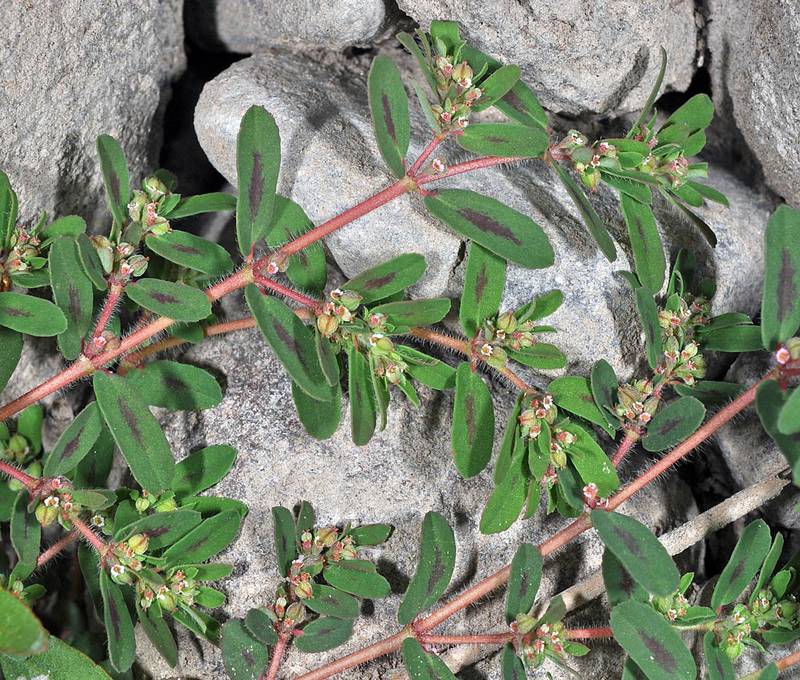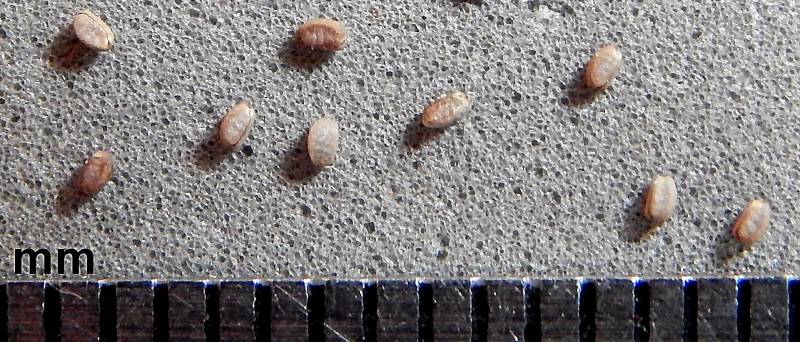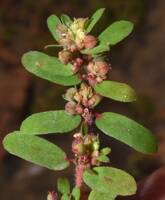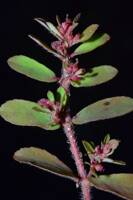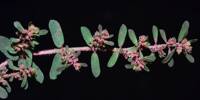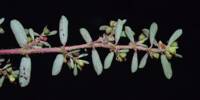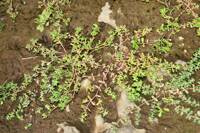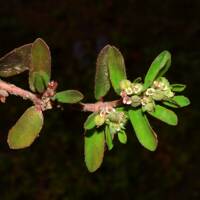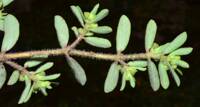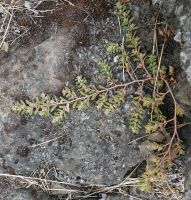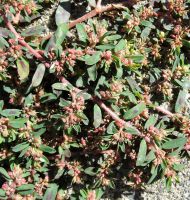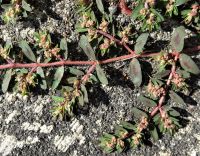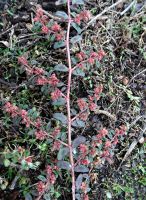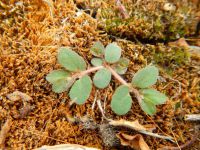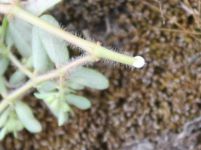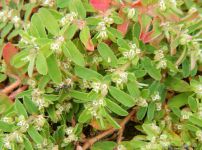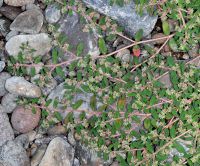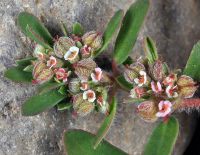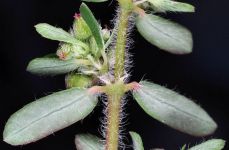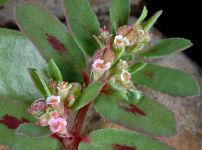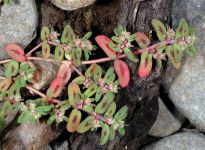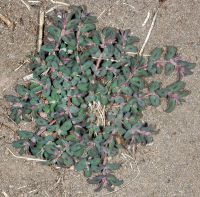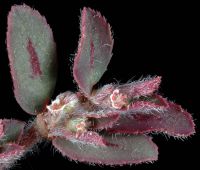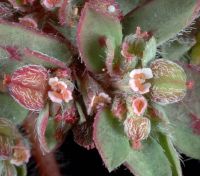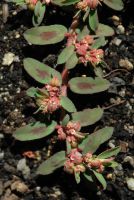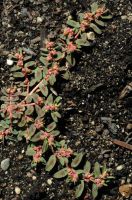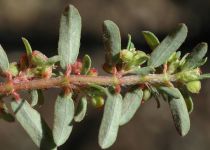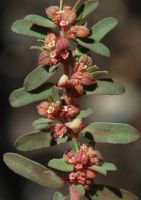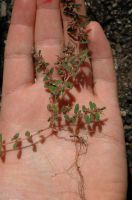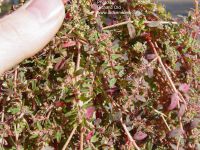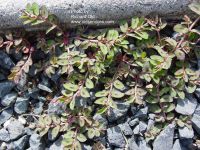Distribution: Occurring on both sides of the Cascades in Washington; British Columbia to California, east across North America to the Atlantic Coast.
Habitat: Disturbed soil and waste areas.
Flowers: June-September
Origin: Introduced from eastern North America
Growth Duration: Annual
Conservation Status: Not of concern
Pollination: Bees, wasps
Monoecious, ascending to erect annual, the stems freely-branched, 1-5 dm. tall, white-woolly below and glabrous above.
Leaves opposite, short-petiolate, oblong or oblong-lanceolate, 1-3 cm. long and 4-9 mm. wide, with long, soft hairs; stipules triangular, 1 mm. long.
Inflorescence of cymes terminal on the branches, the flowers tiny, monoecious, borne in involucres; staminate flowers numerous, naked, each consisting of a single stamen; pistillate flower single and terminal in the involucre; involucre obconic, 1.5 mm. long, bearing 4 glands separated by reniform appendages, white or pink, entire, 0.2-0.4 mm. long.
Capsules 2 mm. long; seeds golden-brown, 1.3 mm. long, flattened and shallowly pitted between the 3 or 4 rounded, longitudinal ridges.
Publication: Sp. Pl. 1: 455. 1753.
Euphorbia supina Raf. [HC]
PNW Herbaria: Specimen records of Euphorbia maculata in the Consortium of Pacific Northwest Herbaria database
WA Flora Checklist: Euphorbia maculata checklist entry
OregonFlora: Euphorbia maculata information
E-Flora BC: Euphorbia maculata atlas page
CalPhotos: Euphorbia maculata photos

